A mechanism to improve early diabetic nephropathy by modulating autophagy-related mechanisms with Yuye Decotion
Xiao-Cui Wu, Zhao-Jun Yang, Zhi-Hua Yang, Jian-Hao Li, Ya-Wei Cheng, Yi-Qiang Xie
1. Department of Endocrinology, Hainan Provincial Hospital of Chinese medicine (Haikou, Hainan 570203China)
2. Guangzhou University of Traditional Chinese Medicine(Guangzhou, Guangdong 510006China)
3. Department of Preventive Treatment of Disease, Hainan Provincial Hospital of Chinese medicine (Haikou, Hainan 570203China) , Department of Chinese Medicine,Hainan Medical College (Haikou, Hainan 571199 China)
Keywords:Yuye Decotion Diabetic kidney disease Autophagy related genes Network pharmacology Molecular docking
ABSTRACT Objective: To investigate the molecular mechanisms of Yuye Decotion in the treatment of diabetic kidney disease using network pharmacology methods and molecular docking techniques. Methods: Obtain the transcriptome gene expression of diabetic nephropathy through GEO database, and extract genes related to autophagy. Screen the active ingredients and corresponding targets of Yuye Decoction through the TCMSP database, and map the drug prediction targets and disease targets to obtain the autophagy-related Yuye treatment targets for diabetic nephropathy point. Use String database combined with Cytoscape 3.7.2 software to construct the "drug-active ingredient-target" network and protein interaction network of Yuyetang for the treatment of diabetic nephropathy. The target point of liquid soup in the treatment of diabetic nephropathy was analyzed by GO biological process enrichment analysis and KEGG pathway enrichment analysis, and finally used Pymol and other software to analyze the core active components of Yuye Decotion and The core target protein undergoes molecular docking verification. Results: (i)100 eligible diabetic nephropathy and autophagy related genes were screened, and the potential targets of Yuye Decoction were 1,428. The acquired genes related to diabetic nephropathy and autophagy were mapped to potential targets of Yuye Decoction, and 22 therapeutic targets were obtained. GO biological process enrichment analysis and KEGG pathway enrichment analysis found that the pathways related to autophagy in the treatment of diabetic nephropathy by Yuye Decoction may include mTOR signaling pathway, phospholipase D signaling pathway, insulin resistance, EGFR tyrosine kinase inhibitor resistance, Apoptosis, PI3K /Akt signaling pathway, NF-κB signaling pathway, etc.(ii)The protein interaction network shows that VEGFA, ERBB2, GASP3, MAPK8, MYC,CDKN1A, EGFR, BCL2L1 may be the key targets of Yuye Decoction in the treatment of diabetic nephropathy. Molecular docking realizes the binding of 4 core active ingredients to 8 core target proteins. Conclusions: The research results show that Yuye Decoction treats diabetic nephropathy through multi-component, multi-target, and multi-pathway action, and provides new theoretical basis for the study of pharmacological effects and clinical application of Yuye Decoction in the treatment of diabetic nephropathy in autophagy-related aspects.✉Corresponding author:XIE Yi-qiang.E-mail:xieyiqiang@hainmc.edu.cn.
1. Introduction
Diabetic kidney disease (DKD) is the most common chronic complication of diabetes mellitus with the greatest microvascular risk, and the current prevalence is about 30%-40% [1]. With the rapid increase in the number of people with diabetes, the prevalence of DKD is also on the rise year by year. DKD can involve the whole kidney and is the main cause of end-stage renal disease (ESRD) [2],and if the disease progresses further to ESRD, the 5-year survival rate of its patients will be greatly reduced [3]. Early stage DKD is mainly characterized by albuminuria and diabetic retinopathy, and the disease is still in a manageable stage, so it is significant to delay early and mid-stage DKD through treatment. However, the etiology of DKD is complex, the pathogenesis is not yet clear, and there is a lack of targeted treatment, while TCM can provide another way to solve the problem for DKD patients.
DKD is developed from the "thirst" in Chinese medicine, and its clinical manifestations belong to the category of "edema","guangs", "turbidity of urine" and other related diseases, which can also be called "elimination of kidney". The early stage of DKD is mostly characterized by dry heat and yin deficiency or qi and yin deficiency, which should be treated by the method of clearing heat and nourishing yin or benefiting qi and nourishing yin, of which Yuye Decoction is a representative formula [4, 5]. Yuye Decoction,which originated from the book of Records of Traditional Chinese and Western Medicine in Combination by Zhang Xichun, has the effect of benefiting qi and nourishing yin, generating fluid and quenching thirst, and its efficacy in treating diabetes has been confirmed in previous studies [6, 7]. Modern pharmacological studies have demonstrated its significant effects in lowering blood glucose,improving insulin sensitivity of cells in the body, and improving oxygen free radical metabolism disorders [8, 9], but its mechanism of action has not been fully elucidated.
Autophagy is a biological process mediated by a lysosome.This process accelerates metabolism by degrading abnormal intracellular proteins and damaged organelles, thereby maintaining cellular homeostasis [10]. Numerous studies have confirmed that dysregulation of autophagy in diabetic kidney cells may lead to glomerular lamina propria and tubulointerstitial lesions [11, 12], and that renal cell autophagic activity can be regulated by insulin [13].Previous studies have shown that Astragalus membranaceus and Pueraria lobata in Yuye Decoction can regulate the imbalance of signaling pathways under pathological conditions, reverse glucoseinduced mesenchymal transdifferentiation of foot cell epithelium,and further inhibit renal thylakoid hyperplasia caused by high glucose stimulation, thus slowing down renal tissue damage [14, 15].Therefore, Yuye Decoction may slow down the process of DKD by regulating the autophagic process in kidney cells.
In this study, we used network pharmacology, GEO data mining,and molecular docking to investigate the autophagy-related mechanisms of Yuye Decoction for diabetic nephropathy.
2. Methods
2.1 Acquisition of genes related to diabetic nephropathy and autophagy
2.1.1 Transcriptome data downloadThe GEO platform was searched, the search criteria were restricted to all types of diabetic nephropathy in all subbanks of the GEO database, the sample type was set to transcriptomic gene expression profile, and the GSE30122 dataset was selected for download.
2.1.2 Transcriptome data collation and ID conversion
The downloaded transcriptome data were sorted using the homemade Perl language scripts moveFiles.pl and merge.pl, and two files, mRNAmatrix and normalTumor, were output; after sorting the resulting data, the relevant gene IDs were converted to gene names using the clusterProfiler package in R language.
2.1.3 Extraction of autophagy-related genes
The genes whose names have been transformed in 2.1.2 were converted to data by the homemade Perl software script Autophagyexp.pl, and the Human Autophagy database (human autophagy database) was searched to extract and export autophagyrelated genes.
2.1.4 Autophagy gene differential expression analysis
Using the BiocManager and limma packages in R language, set the working directory as the expression of autophagy-related genes obtained in 2.1.3, and set the threshold value of false discovery rate(FDR) and the logarithm of the difference multiplicity (logFC).After setting, the data were read in R software and variance analysis was performed to obtain the p-value, FDR value and logFC value of expression differences.
2.1.5 Data visualizationA heat map of autophagy-related gene expression in all samples can be drawn based on the expression differences obtained in 2.1.4 to visualize the data obtained from the difference analysis.
2.2 Network pharmacology study of Yuye Decoction for diabetic nephropathy
2.2.1 Obtaining genetic information of YuLiTangThe TCMSP database (version2.3, http://lsp.nwu.edu.cn/tcmsp.php)was searched to obtain the chemical composition of Yuye Decoction by using the constituents of Yuye Decoction as search terms.Considering the blood concentration of herbal ingredients in vivo,the search results were screened by limiting the conditions to oral bioavailability greater than or equal to 30% and drug-like properties greater than or equal to 0.18 to obtain the information of the corresponding chemical components as potential active ingredients,and the potential targets of action corresponding to each component were also obtained in the platform. The Uniprot database was used to find the gene names and numbers corresponding to all targets.
2.2.2 Obtaining autophagy-related targets of Yuye Decoction for the treatment of diabetic nephropathyThe autophagy-related differential genes of diabetic nephropathy obtained in 2.1.3 were mapped with the potential targets of Yuye Decoction obtained in 2.2.1 to obtain the therapeutic targets. The active ingredient-target correspondence was established, and the results were imported into Cytoscape 3.7.2 to obtain the "drug-active ingredient-target" network.
2.2.3 Protein interaction network construction and analysis
The therapeutic target genes obtained in 2.2.2 were imported into the String gene interaction network database (https://string-db.org/),the species was selected as "Homo sapiens", and the selected targets were searched in "Multiple proteins", select the confidence level of 0.400, and save the protein interactions as TSV files. The TSV file was imported into Cytoscape 3.7.2 software, and network analysis was performed with Network Analyzer tool to obtain Degree(connectivity), and the core proteins were filtered out to create a PPI network map by setting the Degree value to be greater than 2 times its median.
2.2.4 GO biological process enrichment analysis and KEGG pathway enrichment analysis
GO biological process enrichment analysis and KEGG pathway enrichment analysis were performed using Metascape (http://metascape.org/gp/index.html). The GO bar graphs were drawn based on the corrected P values of the relevant genes from the GO biological process enrichment analysis, which mainly used the digest package and GOplot package in R. The KEGG bubble graphs were drawn based on the logFC values from the KEGG pathway enrichment analysis, which mainly used the R package similar to the GO bar graphs.
2.3 Molecular docking validation
In the "drug-active-active-component-target" network obtained in 2.2.1, the Degree values of the active components were calculated by using CentiScape, and the active components with the highest Degree values were selected for molecular docking with the core targets screened by the PPI network.The 2D structures of compounds were obtained from the PubChem database (https://pubchem.ncbi.nlm.nih.gov/); the 3D structures of target genes were obtained from the PDB database (http://www.rcsb.org). Compound 2D structures were 3D reprocessed using Chem3D,Autodock Vina software was used for activity pocket analysis as well as molecular docking, and the results were output optimized using Pymol software.
3. Results
3.1 Autophagy-related gene statistics in diabetic nephropathy
The diabetic nephropathy data of human species in GEO database was retrieved, and the sample type was set to human transcriptomic genes, and 25523 transcriptomic gene data were downloaded.Human Autophagy database (human autophagy database) was retrieved and mapped to human diabetic nephropathy transcriptome genes, and autophagy-related gene disease was extracted for differential analysis based on differential gene expression, and heat map of differential analysis of autophagy-related gene expression was drawn (as Figure 1), and 100 eligible diabetic nephropathy and autophagy-related genes were obtained.
3.2 Autophagy-related action targets of Yuye Decoction for diabetic nephropathy
In the TCMSP database, the bioavailability (OB) ≥ 30% and druglike properties (DL) ≥ 0.18 were used as screening conditions to obtain a total of 78 active ingredients and 3678 corresponding targets of Yuye Decoction (Rhizoma Dioscoreae, Radix Astragali,Anemarrhenae Rhizoma, Radix Puerariae, Schisandra chinensis,Trichosanthin and Endothlium Comeum), respectively. After eliminating duplicate items and targets without corresponding active ingredients, a total of 1428 potential action targets of Yuye Decoction were obtained. The obtained genes related to autophagy in diabetic nephropathy were mapped to the potential action targets of Yuye Decoction, and 22 therapeutic targets with their corresponding gene names and numbers were obtained (as in Table 1).
3.3 Construction of PPI network
The PPI network of core targets was obtained by inputting the targets related to autophagy of Yuye Decoction for diabetic nephropathy into String database with the restricted species "Homo sapiens" and the confidence level of 0.400. The obtained data were imported into Cytoscape 3.7.2 in TSV format. The targets with larger Degree values were screened as the PPI core network, and the core targets of Yuye Decoction for diabetic nephropathy were obtained including VEGFA, ERBB2, GASP3, MAPK8, MYC, CDKN1A,EGFR, BCL2L1, etc., as shown in Figure 2.
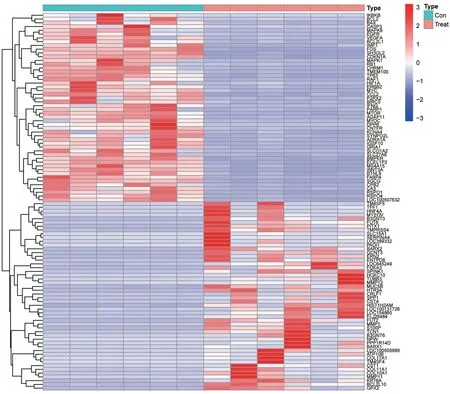
Figure 1 Heat map for differential analysis of autophagy-related gene expression in GSE30122
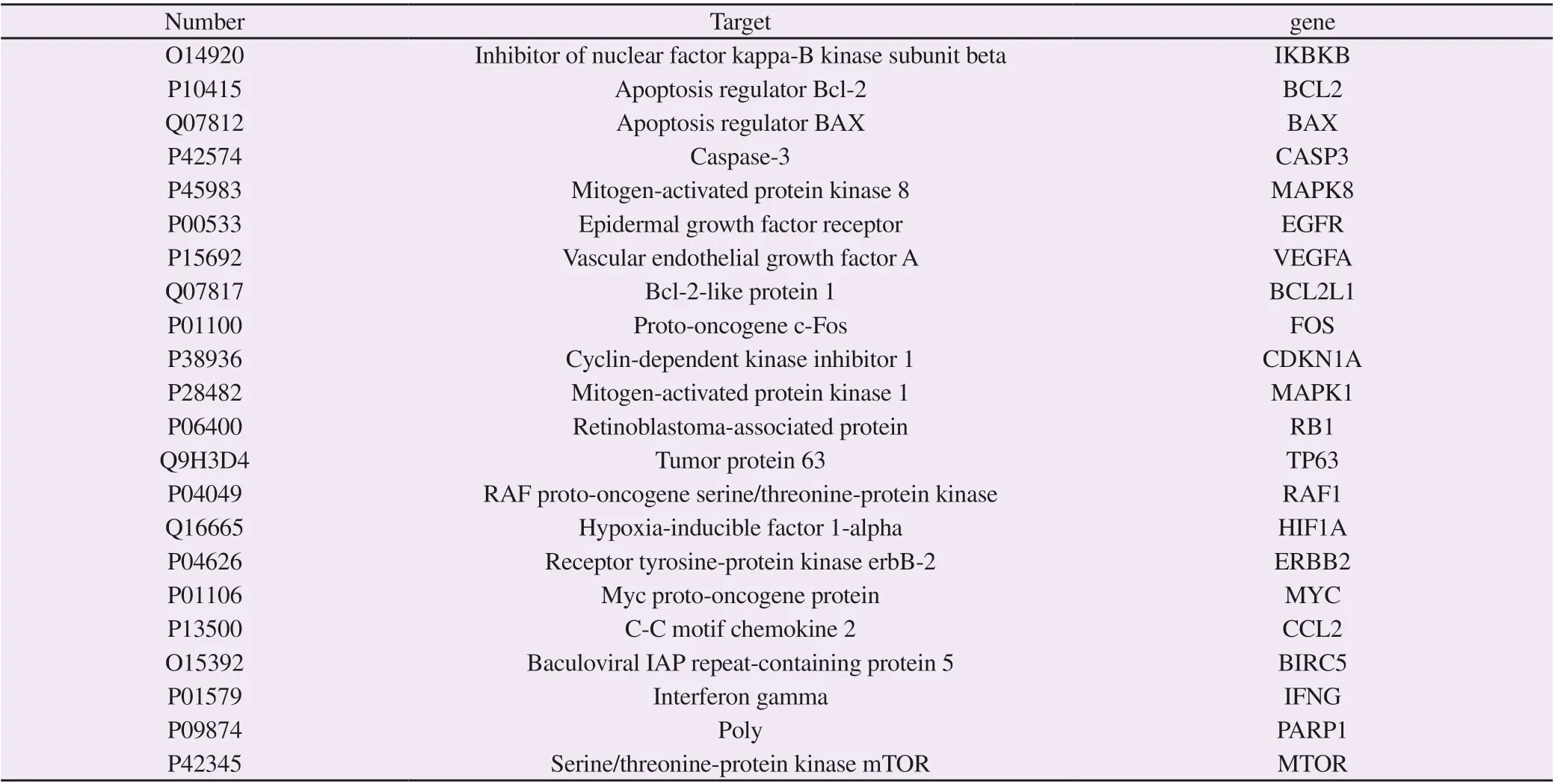
Table1 Autophagy Related Genes in treating diabetic nephropathy with Yuye Decotion
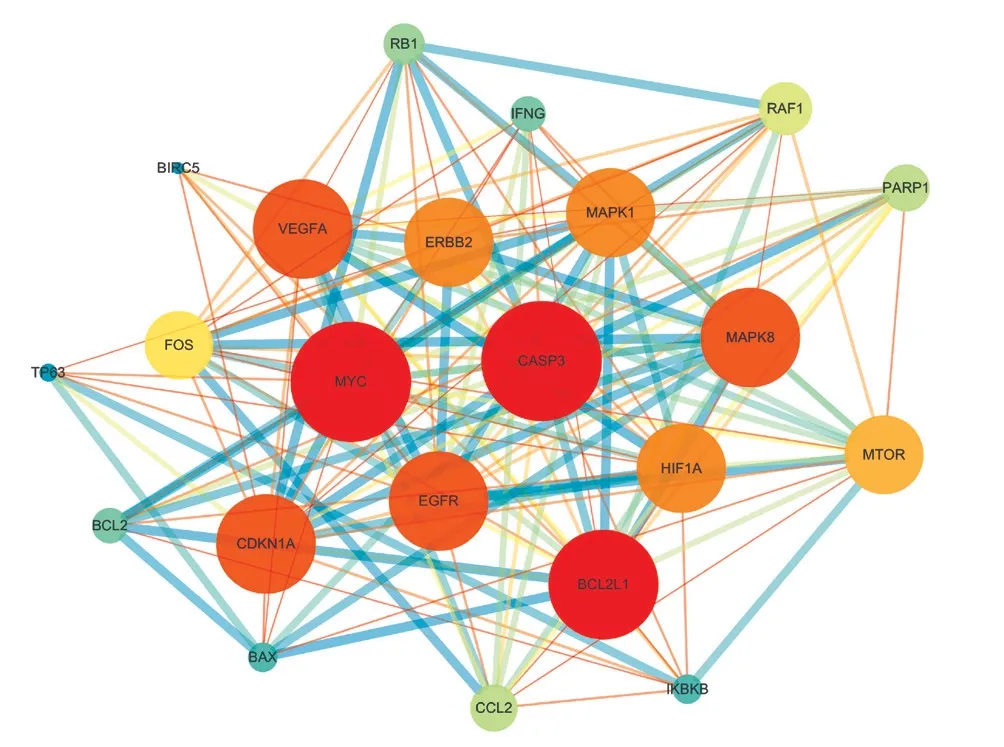
Figure 2 Interaction network of autophagy-related proteins in diabetic nephropathy treated with Yuye Decotion
3.4 Results of GO biological process enrichment analysis
The GO biological process enrichment analysis was performed using Metascape (http://metascape.org/gp/index.html#/main/step1)for the treatment target genes obtained in 2.2.2. Using the digest package and GOplot package in R language, the GO bar graphs were plotted based on the corrected P values of the relevant genes obtained from the GO biological process enrichment analysis, as shown in Figure 3; based on the results, it was found that the pathways associated with autophagy in the treatment of diabetic nephropathy by Yuye Decoction might include mTOR signaling pathway,phospholipase D signaling pathway (phospholipase D signaling pathway), insulin resistance (Insulin resistance), EGFR tyrosine kinase inhibitor resistance (EGFR tyrosine kinase resistance), and apoptosis (Apoptosis). Apoptosis, etc.
3.5 Results of KEGG pathway enrichment analysis
The KEGG bubble plots were drawn based on the logFC values obtained from the KEGG pathway enrichment analysis, as shown in Figure 4, where the main R package used was similar to the GO heat map drawing. From the figure, it can be concluded that the pathways associated with autophagy in Yuye Decoction treatment of diabetic nephropathy may be mTOR signaling pathway, PI3K /Akt signaling pathway, EGFR tyrosine kinase inhibitor resistance, EGFR tyrosine kinase inhibitor resistance), NF-κB signaling pathway (NF-kappa B signaling pathway), Apoptosis, etc.

Figure 3 Bar graph of pathways associated with autophagy in the treatment of diabetic nephropathy with Yuye Decotion based on GO analysis

Figure 4 Autophagy-related pathway bubble map based on KEGG analysis of Yuye Decotion for diabetic nephropathy
3.6 Molecular docking validation results
Based on the results of the "drug-active-active-component-target"network, four core active components of the six core drugs (Rhizoma Dioscoreae, Radix Astragali, Anemarrhenae Rhizoma, Radix Puerariae, Schisandra chinensis, Trichosanthin and Endothlium Comeum) of Yuye Decoction, namely, quercetin, beta-sitosterol,diosgenin and kaempferol, were screened, and 8 core target proteins(BCL2L1, CASP3, CDKN1A, EGFR, MAPK1, MAPK8, MYC,VEGFA). Components were molecularly docked to the core target proteins.
In molecular docking, the more stable the binding of both ligand and receptor, the lower the free energy of both. The results showed that the free energy of quercetin with MYC, MAPK1, BCL2L1,CASP3 and VEGFA, the five core target proteins, were <-6.0 kcal/mol, and the free energy with CDKN1A and EGFR, the two core targets, was higher, some results are shown in Table 2; the free energy of β-sitosterol with CASP3 was -6.0 kcal/mol. The free energy of diosgenin with CDKN1A and VEGFA was -5.5 kcal/mol and -8.3 kcal/mol, respectively; the free energy of kaempferol with MAPK8 was -8.2 kcal/mol.After visual optimization of the molecular docking results in Pymol software, a three-dimensional map of molecular docking was output,with small molecule ligands in blue and large molecule receptor results in green; some of the results are shown in Figures 5-6.

Table 2 Binding ability of core active ingredient quercetin to some core target proteins
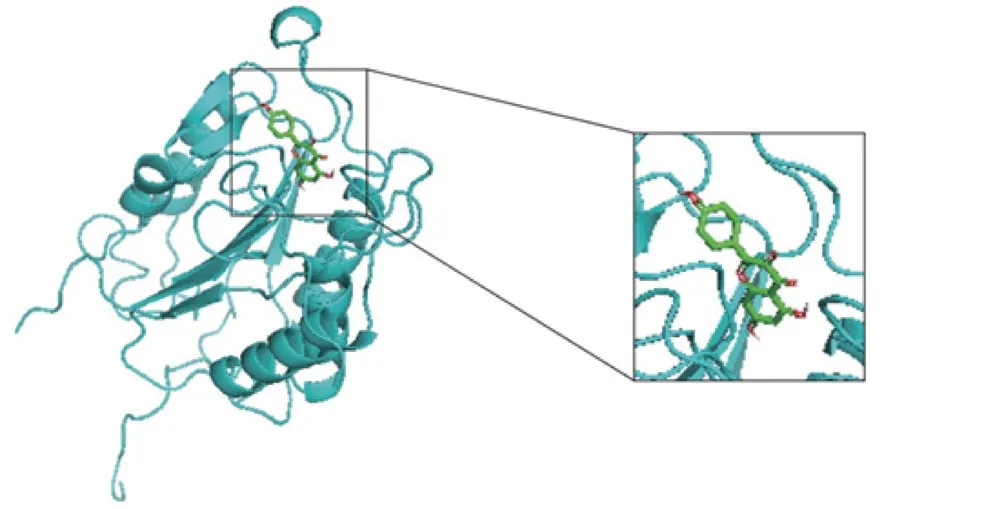
Figure 5 CASP3 docking with kaempferol (free energy = -7.3 kcal/mol)
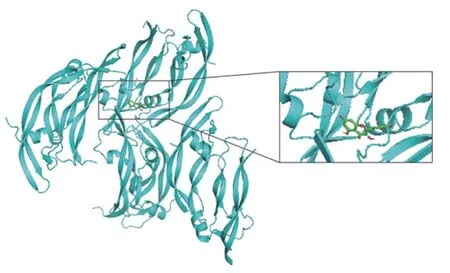
Figure 6 VEGFA docking with quercetin (free energy = -8.1 kcal/mol)
4. Discussion
Diabetic nephropathy is the most common organ complication in the development of diabetes mellitus, with a strong pre-insidious onset and no obvious early symptoms, but with the continuous development of the disease will lead to the development of renal failure. At present, there is no clinical cure for diabetic nephropathy,and the disease is mainly stabilized by diet control, exercise management, and blood glucose and blood pressure control [16].In Chinese medicine, diabetic nephropathy belongs to the category of "urinary turbidity", "edema", and "disease of elimination". In the classical Chinese medical text "Ling Shu", it is mentioned that"those who have weakness in all five organs are good at disease elimination." It is pointed out that the pathogenesis of thirst is related to the diminished function of the five viscera, deficiency of yin and blood, and deficiency of essence. Therefore, Chinese medicine believes that the onset of diabetic nephropathy is closely related to overexertion, deficiency of kidney essence, and deficiency of cold in the kidney, and advocates benefiting qi and nourishing yin,invigorating blood and generating fluid, and tonifying the kidney and strengthening the spleen in treatment [17]. The herbal soup used in this study was selected from the book of Records of Traditional Chinese and Western Medicine in Combination by Zhang Xichun,which uses Rhizoma Dioscoreae, Radix Astragali, Anemarrhenae Rhizoma, Radix Puerariae, and Trichosanthin to double tonify the spleen and kidney, and also uses Schisandra chinensis and Endothlium Comeum to astringently fix the astringency, taking both the symptoms and the root into account.
In Western medicine, it is believed that diabetic nephropathy is closely related to cellular autophagy. In diabetic nephropathy, the autophagy pathway is impaired by the high glucose level in the kidney, and the altered autophagy pathway status can regulate the normal autophagic response caused by intracellular stress, which can lead to the disturbance of the intracellular environment and eventually the development of diabetic nephropathy [18]. In this study, we attempted to investigate the mechanism of autophagyrelated Yuye Decoction in the treatment of diabetic nephropathy by constructing a "drug-active ingredient-target" network and molecular docking method.
The core targets of Yuye Decoction for diabetic nephropathy include VEGFA, ERBB2, CASP3, MAPK8, MYC, CDKN1A,EGFR, and BCL2L1, all of which are associated with cellular autophagy. In type 2 diabetes, VEGFA is involved in regulating mechanical pathways that lead to loss of glomerular polysaccharideprotein complexes, including hyperglycemia and ROS. Studies have shown that this process may be associated with loss of expression of VEGF-A165b, a VEGFA antagonist, in patients [19].
In this study, we found in GO biological process enrichment analysis and KEGG pathway enrichment analysis that the pathways associated with cellular autophagy in Yuye Decoction treatment of diabetic nephropathy are mTOR signaling pathway, PI3K/Akt signaling pathway, EGFR tyrosine kinase inhibitor resistance, NFκB signaling pathway, and apoptosis. PI3K is a key regulatory enzyme for PI3K-Akt pathway activation, which can act as an intracellular phosphatidylinositol kinase regulating the activity of its downstream molecules. It has been shown that activation of the PI3K-Akt pathway can alter the expression of podocyte marker proteins, which in turn can alter the structure of marker proteins,affecting the structural integrity of the podocyte and making it dysfunctional. the PI3K-Akt pathway can work with the p38-MAPK pathway to mediate apoptosis in renal tubular epithelial cells and improve tubular function [20]. mTOR kinase activation is a major shutdown of cellular autophagy inhibitory signal that inhibits the formation of autophagosomes. Cytokines that can signal to mTORC1 via Akt or ERK1/2 then activate tuberous sclerosis-2(TSC2), reducing the inhibitory signal of mTORC1, which in turn triggers autophagy. mTORC2 is able to activate Akt and positively regulates cell survival. mTORC1 activated by TSC2 can also activate the downstream transcription factor TFEB, triggering further autophagy, while the downstream gene hypoxia-inducible factor-1(HIF-1) activated by mTORC1 induces vascular endothelial growth factor (VEGF) production and thus neovascularization [19]. NFκB is a family of transcription factor proteins that serve as multiple intracellular Activation of NF-κB activates the transcription of TNF-α and interleukin-1β, which not only inversely regulate NFκB to further activate it, but also induce the production of new chemokines in the blood to accumulate at the site of inflammatory response, leading to the further spread and further induce diabetic nephropathy, which is an important factor in the formation of diabetic nephropathy [21]. Tumor necrosis factor (TNF) is a cytokine naturally produced by macrophages in response to bacterial infection or other immune sources, and is divided into two types, TNF-α and TNF-β, depending on its origin and structure, which promote cell proliferation and differentiation, are important inflammatory factors,and are involved in the pathological damage of some autoimmune diseases. Among them, the level of TNF-α expression increases with the progression of diabetic nephropathy and therefore can be used to determine the degree of diabetic kidney injury [22].
In this study, the four core active ingredients in the Yuye Decoction formula, namely quercetin, β-sitosterol, diosgenin and kaempferol,were screened based on the results of the "drug-active-activecomponent-target" network. It has been shown that quercetin attenuates the damage of high glucose on human glomerular endothelial cells, possibly through activation of the PI3K/AKT pathway to promote cell resistance to apoptosis and antagonize oxidative stress [23]. Kaempferol may protect rat renal thylakoid cells in high glucose culture by inhibiting cell proliferation [24].Diosgenin can inhibit the accumulation of serum creatinine and reduce urinary protein production, thus improving renal function; it can also further inhibit the phosphorylation of transcription factor NF-κB by reducing MPO activity [25]. The molecular docking results showed that the core active ingredients in the Yuye Decoction group of drugs and most of the therapeutic core targets associated with autophagy have good interaction and binding activities.
In summary, this study used network pharmacology combined with molecular docking to analyze the core target functions and possible signaling pathways related to autophagy in the treatment of diabetic nephropathy with Yuye Decoction, confirming that Yuye Decoction acts through multiple components, targets and pathways in the treatment of diabetic nephropathy, and providing a basis for subsequent studies on the mechanism of action of Yuye Decoction in the treatment of diabetic nephropathy related to autophagy. However,this study failed to conduct relevant experiments to verify the obtained targets and pathways, which will be the focus of the next study. e targets associated with autophagy had good interaction and binding activities.
Authors’s contribution Wu Xiaocui and Yang Zhaojun completed the analysis and writing of the network pharmacology section of the paper and the discussion of Chinese medicine theory; Li Jianhao completed the writing of the review in the discussion; Yang Zhihua completed the writing of the English abstract of the paper; Cheng Yawei completed the research and writing of the epidemiology of DKD in the introduction of the paper; Xie Yiqiang, as the project leader, completed the supervision and revision of the paper.
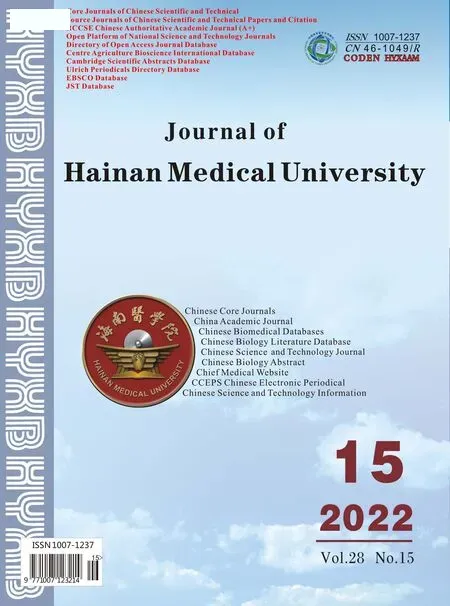 Journal of Hainan Medical College2022年15期
Journal of Hainan Medical College2022年15期
- Journal of Hainan Medical College的其它文章
- Research progress of autophagy in acute lung injury induced by multiple factors
- Research progress and comparison of the establishment of animal models of radiotherapy or chemotherapy-induced oral mucositis
- Based on the national patent database to explore the rule of traditional Chinese medicine in the treatment of hyperlipidemia
- Nonsurgical intervention for neuroclaudication due to lumbar spinal stenosis: Interpretation of the 2021 American Association for the Study of Pain Guidelines
- Study on the mechanism and active components of Radix et Rhizoma Rhei in the treatment of Alzheimer's disease based on molecular docking
- Meta analysis of the effect of aerobic exercise on inflammatory factors and glucose and lipid metabolism in patients with type 2 diabetes mellitus
